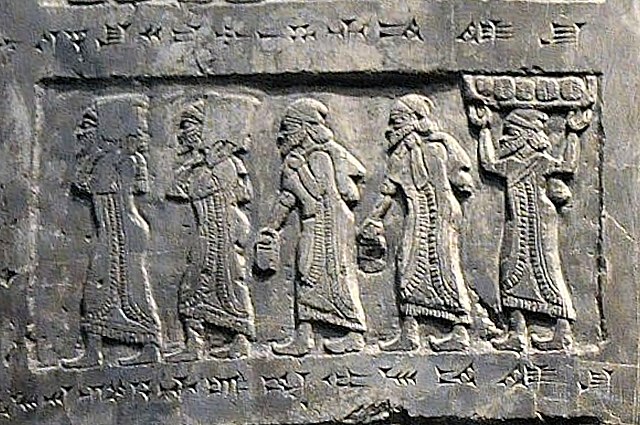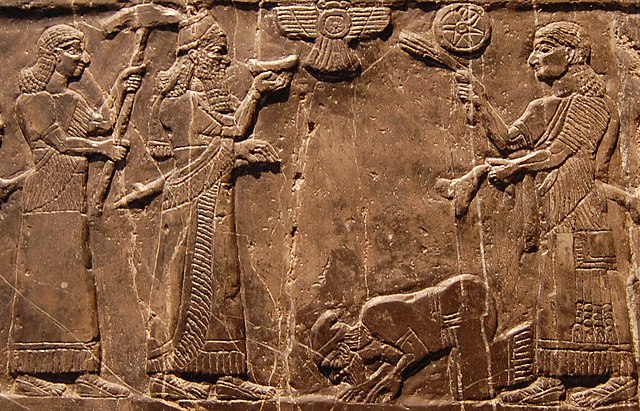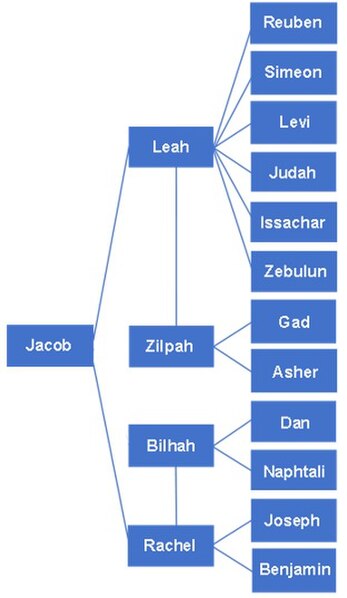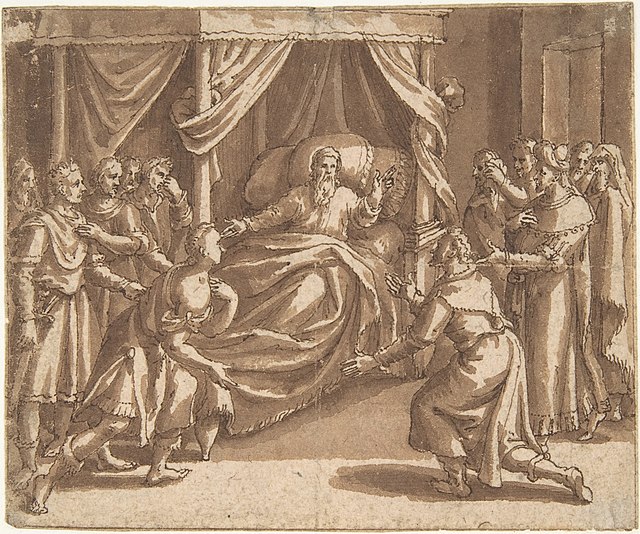The Ten Lost Tribes were the ten of the Twelve Tribes of Israel that were said to have been exiled from the Kingdom of Israel after its conquest by the Neo-Assyrian Empire c. 722 BCE. These are the tribes of Reuben, Simeon, Dan, Naphtali, Gad, Asher, Issachar, Zebulun, Manasseh, and Ephraim — all but Judah, Benjamin, and some members of the priestly Tribe of Levi, which did not have its own territory.
Delegation of the Northern Kingdom of Israel, bearing gifts to the Assyrian ruler Shalmaneser III, c. 840 BCE, on the Black Obelisk, British Museum.
A depiction of either King Jehu, or Jehu's ambassador, kneeling at the feet of Shalmaneser III on the Black Obelisk.
The Twelve Tribes of Israel are, according to Hebrew scriptures, the descendants of the biblical patriarch Jacob, who collectively form the Israelite nation. The tribes were through his twelve sons through his wives, Leah and Rachel, and his concubines, Bilhah and Zilpah. In modern scholarship, there is skepticism as to whether there ever were twelve Israelite tribes, with the use of the number 12 thought more likely to signify a symbolic tradition as part of a national founding myth, although some scholars disagree with this view.

Mosaic depicting the twelve tribes and their Hebrew names, with symbolic images. Asher: a tree Dan: Scales of justice Judah: Kinnor, cithara and crown, symbolising King David Reuben: Mandrake (Genesis 30:14) Joseph: Palm tree and sheaves of wheat, symbolizing his time in Egypt Naphtali: gazelle (Genesis 49:21) Issachar: Sun, moon and stars (1 Chronicles 12:32) Simeon: towers and walls of the city of Shechem Benjamin: jug, ladle and fork Gad: tents, symbolizing their itinerancy as cattle-herders
Parentage of Jacob's twelve sons, per Genesis 35
The dying Jacob blesses his twelve sons (Adam van Noort)
The twelve tribes of Israel camped around the tabernacle. (Jan Luyken, 1673)






